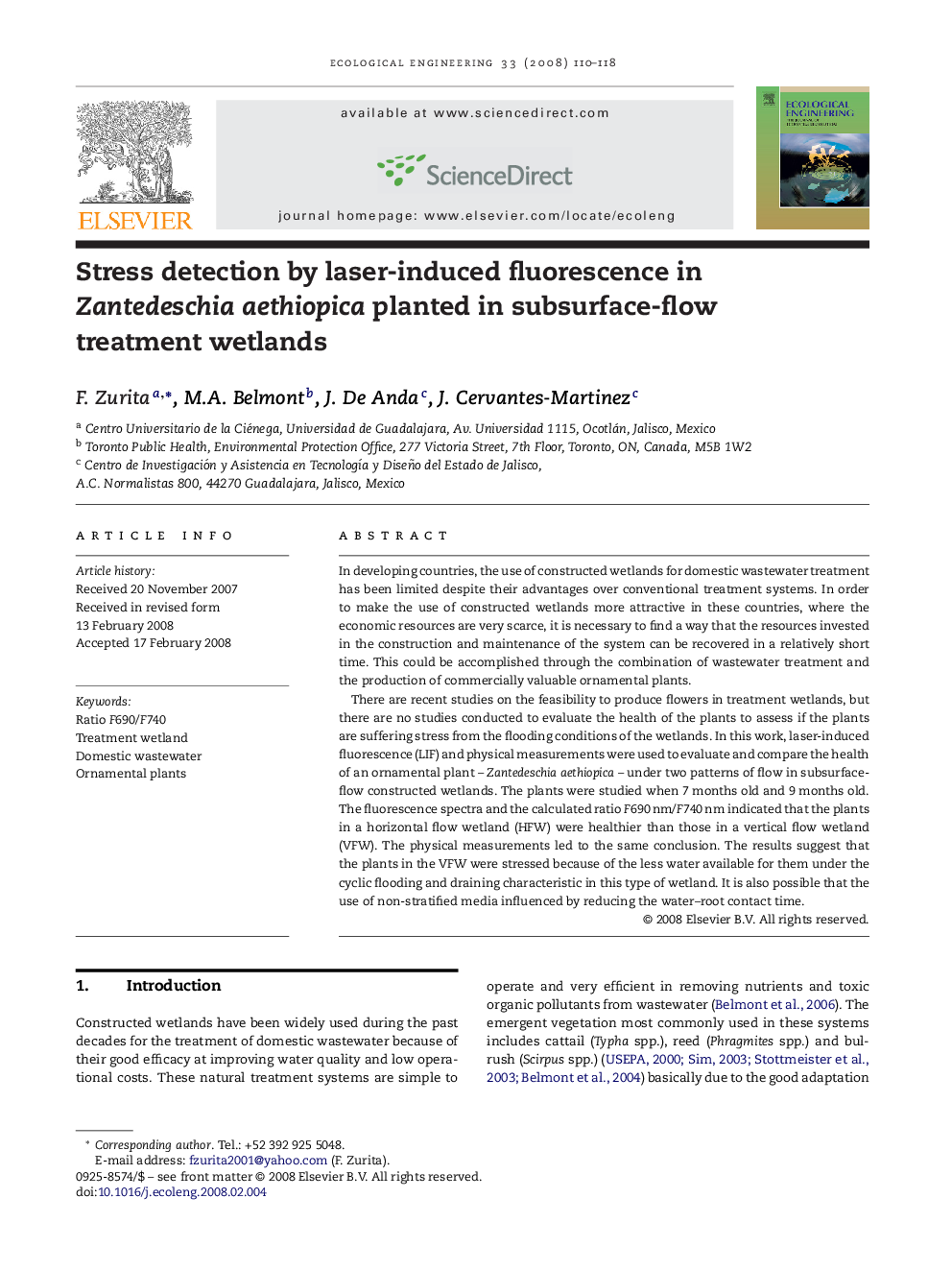| Article ID | Journal | Published Year | Pages | File Type |
|---|---|---|---|---|
| 4390777 | Ecological Engineering | 2008 | 9 Pages |
In developing countries, the use of constructed wetlands for domestic wastewater treatment has been limited despite their advantages over conventional treatment systems. In order to make the use of constructed wetlands more attractive in these countries, where the economic resources are very scarce, it is necessary to find a way that the resources invested in the construction and maintenance of the system can be recovered in a relatively short time. This could be accomplished through the combination of wastewater treatment and the production of commercially valuable ornamental plants.There are recent studies on the feasibility to produce flowers in treatment wetlands, but there are no studies conducted to evaluate the health of the plants to assess if the plants are suffering stress from the flooding conditions of the wetlands. In this work, laser-induced fluorescence (LIF) and physical measurements were used to evaluate and compare the health of an ornamental plant – Zantedeschia aethiopica – under two patterns of flow in subsurface-flow constructed wetlands. The plants were studied when 7 months old and 9 months old. The fluorescence spectra and the calculated ratio F690 nm/F740 nm indicated that the plants in a horizontal flow wetland (HFW) were healthier than those in a vertical flow wetland (VFW). The physical measurements led to the same conclusion. The results suggest that the plants in the VFW were stressed because of the less water available for them under the cyclic flooding and draining characteristic in this type of wetland. It is also possible that the use of non-stratified media influenced by reducing the water–root contact time.
